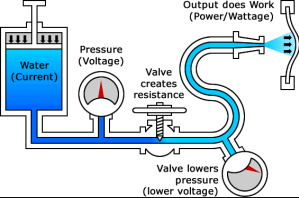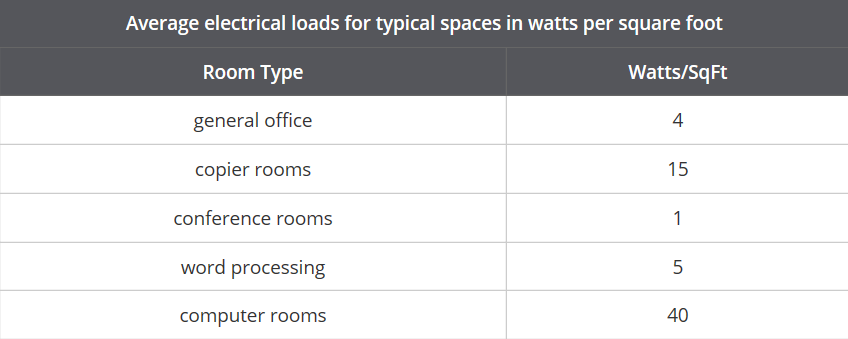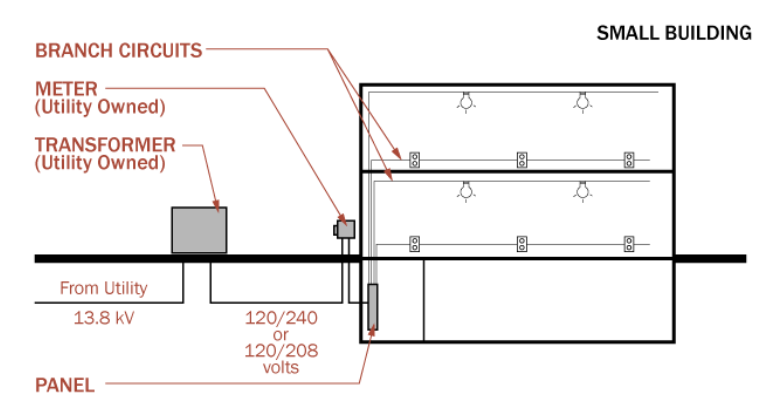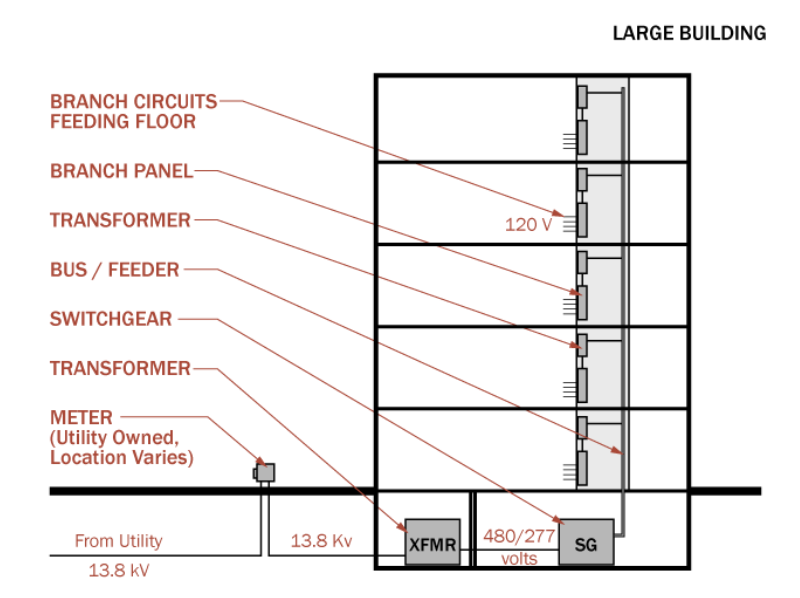I will start off this post by saying that I am NOT an electrician & recommend consulting one for any electrical/ power requirement concerns your company has. However, a recent client request left me stumped & wanting to learn more.
Power generally only comes up in one of two contexts in my business:
- A company with a particularly large requirement (usually for heavy industrial equipment/machinery)
- A company that is overusing the power in their space and causing problems with the circuit (usually from use of larger equipment not intended for a space OR from very high employee density).
But what constitutes an above normal power usage? To begin answering this question, it is important to understand a few definitions/ equations:
Power (P) = Voltage (V) * Current (I)
Current (I) = Voltage (V) / Resistance (Ohms Law)
- Power is measured in Watts
- Voltage is measured in Volts ( and is similar to water pressure)
- Current is measured in Amps (and is like flow rate). 1 Amp =
6.241*10^18 electrons - Resistance is measured in Ohms (and is like pipe size)

Below is the wattage of a few common household/office items:
- Electric Furnace = 10,500 Watts (1.5 kW)
- Central Air (3 ton 12 SEER) = 3,000 Watts
- Microwave = 120 Watts
- Coffee Maker = 120 Watts
- Dishwasher = 2,170 Watts
- Laptop = 50 Watts
- 17″ LCD Monitor = 40 Watts

Using the above chart, a 1,000 SF office might use 4,000 Watts or 4 kW on average not accounting for larger appliances such as HVAC usage or kitchen appliances.
But how much power is supplied to commercial buildings?
Above is a simplified visual representation of a generator creating 3 phase AC power (alternating current oscillates between -170 and 170 volts giving an effective voltage of 120 V).
Most residential machinery can handle these oscillations (and temporary instances of zero volts) but some industrial equipment/motors cannot. Thus the three offset phases allow for near constant voltage.
From the generator, this power goes to a transmission substation and is “stepped up,” to transmission voltages of 155,000 to 765,000 Volts. The range of this transmission is generally around 300 miles (If you look at distribution lines you will see 3 wires for the 3 phases of power + a ground line). The voltage is then “stepped down,” to distribution voltages of around 7,200 Volts to 13,000 Volts. A “Bus,” splits the power into multiple directions and transformer boxes complete the final step down to the voltage levels found in your building.
In residential & small commercial buildings this transformer box is owned by the utility companies and can be found on the street. In larger commercial buildings the transformers, switchgear, bus, etc will be owned by the building owner and contained within the building.


Common wiring methods can be found at the link below, but in general, residential buildings receive single phase power of 240 V (split into 2 legs of 120 V) and commercial buildings receive 3 phase power. The voltage can range but is typically between service voltages of 240 & 600 Volts (excluding large commercial buildings shown above which “step down” the voltage onsite).
This solves for the voltage component of the power equation, but what about Amps?
Older homes typically have 100 Amp panels with newer homes and small commercial buildings in the 150-200 Amp range. In a single phase residence this would allow for 48 kW of power (200 Amps * 240 Volts) and is typically split into 15-20 Amp circuits.
I was not able to find a conclusive upper limit online for the amperage available at larger commercial buildings but have personally seen industrial buildings with 600 to 1000 Amp panels (or multiple smaller panels).
Going back to our small 1,000 SF office example above:
If we plug in our known values to the power equation:
Power (P) = Voltage (V) * Current (I)
4,000 Watts = 120 V * Current (I) = 33 Amps
If this were on a 15-20 Amp circuit, we would be in trouble and would need to rewire to allow for additional circuits within the space. If we were on a 50 Amp circuit, we should not have any issues. However if the company grew and doubled the density of their employees (along with monitors, computers, phones etc) we may also need to reexamine the circuit.
It is worth noting that in homes (and in commercial buildings, but this is more complicated due to the 3 phase aspect and multiple wiring arrangements) a load can be placed between the two single legs of 120 V to obtain 240 V. This is used to power larger equipment such as a water heater or HVAC equipment and cuts the current flow in half.
Additional Resources:
